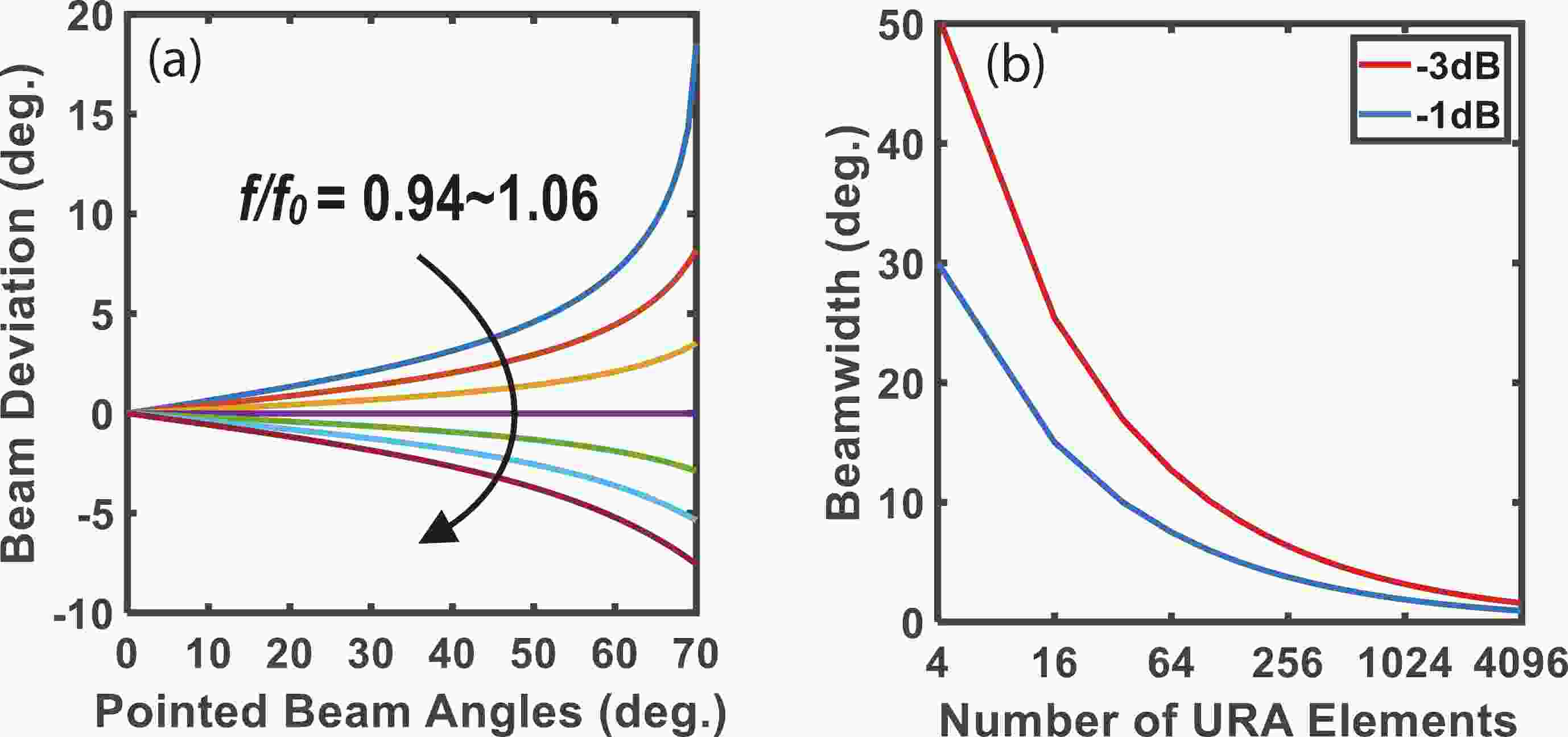| Citation: |
Yongran Yi, Dixian Zhao, Jiajun Zhang, Peng Gu, Chenyu Xu, Yuan Chai, Huiqi Liu, Xiaohu You. A 24−30 GHz 8-element dual-polarized 5G FR2 phased-array transceiver IC with 20.8-dBm TX OP1dB and 4.1-dB RX NFin 65-nm CMOS[J]. Journal of Semiconductors, 2024, 45(1): 012201. doi: 10.1088/1674-4926/45/1/012201
Y R Yi, D X Zhao, J J Zhang, P Gu, C Y Xu, Y Chai, H Q Liu, X H You. A 24−30 GHz 8-element dual-polarized 5G FR2 phased-array transceiver IC with 20.8-dBm TX OP1dB and 4.1-dB RX NFin 65-nm CMOS[J]. J. Semicond, 2024, 45(1): 012201. doi: 10.1088/1674-4926/45/1/012201
Export: BibTex EndNote
|
A 24−30 GHz 8-element dual-polarized 5G FR2 phased-array transceiver IC with 20.8-dBm TX OP1dB and 4.1-dB RX NFin 65-nm CMOS
doi: 10.1088/1674-4926/45/1/012201
More Information-
Abstract
This article presents an 8-element dual-polarized phased-array transceiver (TRX) front-end IC for millimeter-wave (mm-Wave) 5G new radio (NR). Power enhancement technologies for power amplifiers (PA) in mm-Wave 5G phased-array TRX are discussed. A four-stage wideband high-power class-AB PA with distributed-active-transformer (DAT) power combining and multi-stage second-harmonic traps is proposed, ensuring the mitigated amplitude-to-phase (AM-PM) distortions across wide carrier frequencies without degrading transmitting (TX) power, gain and efficiency. TX and receiving (RX) switching is achieved by a matching network co-designed on-chip T/R switch. In each TRX element, 6-bit 360° phase shifting and 6-bit 31.5-dB gain tuning are respectively achieved by the digital-controlled vector-modulated phase shifter (VMPS) and differential attenuator (ATT). Fabricated in 65-nm bulk complementary metal oxide semiconductor (CMOS), the proposed TRX demonstrates the measured peak TX/RX gains of 25.5/21.3 dB, covering the 24−29.5 GHz band. The measured peak TX OP1dB and power-added efficiency (PAE) are 20.8 dBm and 21.1%, respectively. The measured minimum RX NF is 4.1 dB. The TRX achieves an output power of 11.0−12.4 dBm and error vector magnitude (EVM) of 5% with 400-MHz 5G NR FR2 OFDM 64-QAM signals across 24−29.5 GHz, covering 3GPP 5G NR FR2 operating bands of n257, n258, and n261. -
References
[1] Yi Y R, Zhao D X, Zhang J J, et al. A 24–29.5-GHz highly linear phased-array transceiver front-end in 65-nm CMOS supporting 800-MHz 64-QAM and 400-MHz 256-QAM for 5G new radio. IEEE J Solid-State Circuits, 2022, 57, 2702 doi: 10.1109/JSSC.2022.3169588[2] Pang J, Li Z, Luo X T, et al. A CMOS dual-polarized phased-array beamformer utilizing cross-polarization leakage cancellation for 5G MIMO systems. IEEE J Solid-State Circuits, 2021, 56, 1310 doi: 10.1109/JSSC.2020.3045258[3] Park H C, Kang D, Lee S M, et al. 4.1 A 39GHz-band CMOS 16-channel phased-array transceiver IC with a companion dual-stream IF transceiver IC for 5G NR base-station applications. 2020 IEEE International Solid-State Circuits Conference-(ISSCC), San Francisco, CA, USA, 2020, 76 doi: 10.1109/ISSCC19947.2020.9063006[4] Dunworth J D, Homayoun A, Ku B H, et al. A 28GHz bulk-CMOS dual-polarization phased-array transceiver with 24 channels for 5G user and basestation equipment. 2018 IEEE International Solid-State Circuits Conference-(ISSCC), San Francisco, CA, USA, 2018, 70 doi: 10.1109/ISSCC.2018.8310188[5] Sadhu B, Paidimarri A, Liu D X, et al. A 24–30-GHz 256-element dual-polarized 5G phased array using fast on-chip beam calculators and magnetoelectric dipole antennas. IEEE J Solid-State Circuits, 2022, 57, 3599 doi: 10.1109/JSSC.2022.3204807[6] Verma A, Bhagavatula V, Singh A, et al. A 16-channel, 28/39GHz dual-polarized 5G FR2 phased-array transceiver IC with a quad-stream IF transceiver supporting non-contiguous carrier aggregation up to 1.6GHz BW. 2022 IEEE International Solid-State Circuits Conference (ISSCC), San Francisco, CA, USA, 2022, 1 doi: 10.1109/ISSCC42614.2022.9731664[7] Zhao D X, Gu P, Zhong J C, et al. Millimeter-wave integrated phased arrays. IEEE Trans Circuits Syst I, 2021, 68, 3977 doi: 10.1109/TCSI.2021.3093093[8] Wang Y, Wu R, Pang J, et al. A 39-GHz 64-element phased-array transceiver with built-In phase and amplitude calibrations for large-array 5G NR in 65-nm CMOS. IEEE J Solid-State Circuits, 2020, 55, 1249 doi: 10.1109/JSSC.2020.2980509[9] Liu H Q, Zhao D X, Yi Y R, et al. A 24.25-27.5 GHz 128-element dual-polarized 5G integrated phased array with 5.6%-EVM 400-MHz 64-QAM and 50-dBm EIRP. Sci China Inf Sci, 2022, 65, 214301 doi: 10.1007/s11432-022-3584-6[10] 3GPP Specification series. Technical specification 38.104 (V17.6. 0) base station (BS) radio transmission and reception.[11] Haldi P, Chowdhury D, Reynaert P, et al. A 5.8 GHz 1 V linear power amplifier using a novel on-chip transformer power combiner in standard 90 nm CMOS. IEEE J Solid-State Circuits, 2008, 43, 1054 doi: 10.1109/JSSC.2008.920347[12] Aoki I, Kee S D, Rutledge D B, et al. Distributed active transformer-a new power-combining and impedance-transformation technique. IEEE Trans Microw Theory Tech, 2002, 50, 316 doi: 10.1109/22.981284[13] Aoki I, Kee S D, Rutledge D B, et al. Fully integrated CMOS power amplifier design using the distributed active-transformer architecture. IEEE J Solid-State Circuits, 2002, 37, 371 doi: 10.1109/4.987090[14] Yao T, Gordon M Q, Tang K K W, et al. Algorithmic design of CMOS LNAs and PAs for 60-GHz radio. IEEE J Solid-State Circuits, 2007, 42, 1044 doi: 10.1109/JSSC.2007.894325[15] Li Q, Zhang Y P. CMOS T/R switch design: Towards ultra-wideband and higher frequency. IEEE J Solid-State Circuits, 2007, 42, 563 doi: 10.1109/JSSC.2006.891442[16] Long J R. Monolithic transformers for silicon RF IC design. IEEE J Solid-State Circuits, 2000, 35, 1368 doi: 10.1109/4.868049[17] Gu P, Zhao D X, You X H. A DC-50 GHz CMOS switched-type attenuator with capacitive compensation technique. IEEE Trans Circuits Syst I, 2020, 67, 3389 doi: 10.1109/TCSI.2020.2999094[18] Park J S, Wang H. A transformer-based poly-phase network for ultra-broadband quadrature signal generation. IEEE Trans Microw Theory Tech, 2015, 63, 4444 doi: 10.1109/TMTT.2015.2496187 -
Proportional views






 DownLoad:
DownLoad:




















































